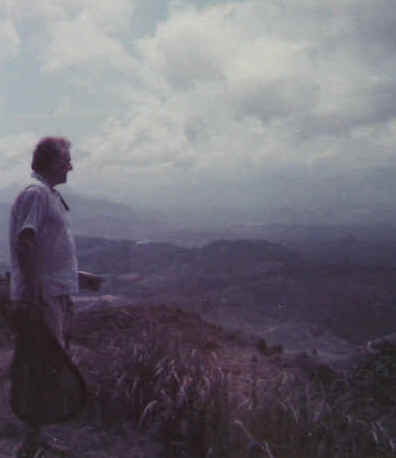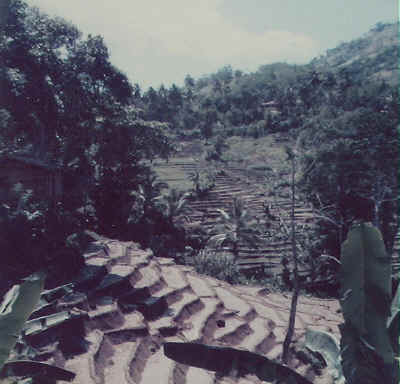1972
- 1979

Malawi
I returned to England. I was then re-appointed to the
new Overseas Civil Service, and went as Director of Planning for three years in the Malawi
Ministry of Agriculture and Natural Resources. In this post, my subjects also included
mining, but only at the stage of recommending exploratory licences. I was responsible for
the Ministry's capital budget, implementation programme, preparation of project documents
for the World Bank and other donors, agro-economic surveys, marketing economics.
Malawi at that time had a well-developed agricultural
economy. There were four major World Bank Smallholder Area Development Projects, the
Lilongwe Land Development project being the best known. Apart from its own maize
requirements, it had an efficient tea industry, produced a large range of tobacco types
with a sophisticated tobacco auction system, a very large sugar output, groundnuts and a
developing cotton industry. Other crops included rice, cocoa, coffee, cashew nuts, tung
oil. Hence my understanding of crop micro-economics was considerably extended.
It was an orderly and beautiful country at that time.
Hastings Banda, the President, was dictatorial, and this caused problems, once his British
Cabinet Secretary retired, because he then became exposed to uncontradicted rumours.
He
had spent much of his life as a medical general practitioner in Britain, and was an
admirer of Churchill. He had an intense dislike of some of the left-wing Malawi
politicians, and consequently fell out with the foreign media who supported them. He had a
bad press, but did far more for Malawi by way of building its infrastructure and
maintaining orderly standards, than most of his neighbours.
Sri Lanka
 |
After leaving Malawi, I went
in 1975 to Sri Lanka on a three-year Colombo Plan assignment to assist the preparation of
aid projects, which hitherto had taken the form of a single A4 sheet. At that time, order
had recently been restored after a Maoist rebellion, and it was possible to visit every
district in detail. The country can grow almost every known commodity, and is a paradise
for an agricultural economist, as also for a botanist. There
is an ancient, complex and highly developed rice industry, one of the world's largest tea
industries, numerous rubber estates, coconuts everywhere, large sugar estates, cocoa,
coffee and cashewnuts, almost every spice and essential oil, and numerous fruit and
horticultural crops. |
There is a large livestock industry,
mainly water buffaloes and dairy cattle, but also smaller stock, sheep, goats, pigs,
spotted deer, poultry, and of course a large fishing industry.
In the Agricultural Project Planning Unit, we concentrated mainly on
rice settlement projects, on the re-capitalisation and modernisation of the dairy
factories, and on the expansion of the potato industry in the horticultural areas of the
hills. We also had a foot and mouth epidemic, and with excellent assistance from UK
veterinary research, put together a complete vaccine project. This was approved by all the
appropriate UK committees, was ready for action, but was never heard of again.
My Sri
Lankan colleague, a well-versed civil servant, when on a visit to the Ministry of Overseas
Development, found his way into the filing cabinets during the lunch interval, discovered
the file, which had been marked ‘put away’ by some junior Assistant Principal. I
do not know if the project was ever put into effect.
Around our time in Sri Lanka, after the Maoist rebellion, Sri Lanka
became socialist for a while, and nationalisation was widespread. This caused major
disruption to estate production. In many cases, estates were looted and equipment
dismantled and stolen. However, many of the more powerful estates and brokerage houses
survived, and the industries later recovered. After all, by that time there was a large
body of native Sri Lankan expertise available to run them.
Indian Research Stations
At the end of my time in Sri Lanka, I had planned to sell my car, an
Allegro 2, which I had originally shipped out from Britain. However, the socialist
government declared this illegal. It was to be sold to them at a rock bottom price. In
that case, I said, I would drive it back to Britain overland.
We had been visited in Sri Lanka by senior Indian research workers,
and I had been invited to visit some of their numerous commodity research stations. This
seemed too good an opportunity to miss, enabling me largely to complete my understanding
of tropical crops. I was able to set up visits to 22 research stations.
On 8th March 1979, I set off across the Palk Strait to India,
travelled up the west coast of Kerala, fortuitously coinciding with an International
Cashew Symposium in Cochin, and finished at the Potato Research Institute in Simla on 3rd
May.
There were opportunities for many other activities enroute; photographing tigers in
the Kanha National Park, flying to Katmandu for a spell in the Himalayas, visiting old
Army friends. My wife joined me in Delhi and we set off home through Afghanistan, Iran,
Turkey.
Always remember, when a soldier sticks his rifle through your car window, offer
him a pack of Benson & Hedges! The situation immediately becomes a social occasion.
Although I had been offered a further three year contract in
Sarawak, moving to shorter term consultancy work would give me more variety. In 1980, I
undertook for the Ministry of Overseas Development an evaluation of the initial trial
period of the:
FAO/UK/Hindustan Fertiliser Corporation Dryland Farming
Fertiliser Education Project, at Indore, Madhya Pradesh India.
This had been designed to apply successful research at Indore
University, in improved varieties and up-dating of the farming system, to the State’s
farmland, which had become largely exhausted of nutrients by centuries of farming, through
efficiently using the rainfall, rather than through the considerably more expensive, and
often environmentally destructive, solution of irrigation.
This was a very efficient project, managed entirely by local people,
with a good input back-up system and credit arrangements through rural banks. Farmers who
adopted it improved their land and, as might be expected, achieved considerable increases
in family income.
My lengthy report on the Project and the farming system was, I
understood, placed in the Wye College library, for future reference.
The Hindustan Fertiliser Corporation was of considerable assistance,
and further increased my understanding of Indian farming through a visit to the farming
areas of West Bengal. |

